Monasukapanough
The first town in the Charlottesville area. This is the third part of Welcome to Charlottesville. Thanks for reading!
At the River’s Bend
A couple miles north of what is now Charlottesville there was a town on the banks of the Rivanna River called Monasukapanough. It was there for seven hundred years.
It’s easier to pronounce than it looks: MONA-SUKA-PAN-OW.
This was one of the principal towns of the Monacan people, whose towns dotted the Rappahannock, Rivanna, and James Rivers above the Fall Line for a thousand years. Right up until the early 18th century. No eyewitness account of Monaskuapanough, or any indigenous Monacan settlement, has come down to us, but to get a sense of settlements before the arrival of the English, here are some images of other mid-Atlantic woodland peoples.*
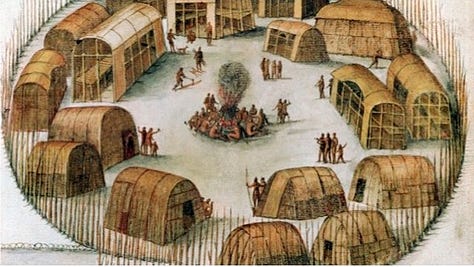
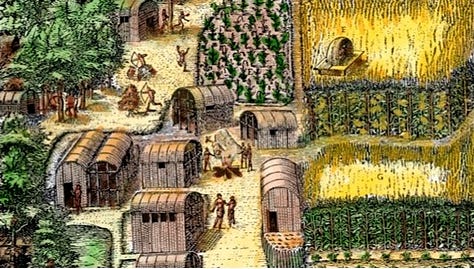
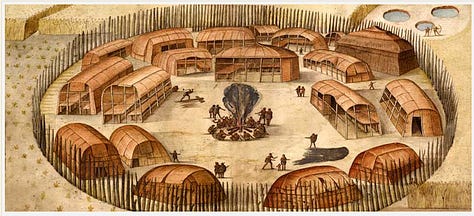
Below is Monaskuapanough today:
Gone is the vitality that characterized the ancient community.
(It’s a soccer field off Polo Grounds Road.)
Like most of the other people of the Eastern seaboard at the time the English landed at Jamestown, the Monacans mostly lived in permanent settled communities on waterways, canoed those waterways, hunted for deer and bear—often in small parties that camped in shelters built far away from the towns and villages—and grew pumpkins, squash, corn, beans, gourds, persimmons, grapes, plums, mulberries, and sunflowers. But unlike the others the Monacans mined copper for jewelry and some tools, and traded the metal to the neighboring peoples.
If we could visit Monasukapanough in its heyday what would have been most striking was the burial mound. Monacans were the only ‘mound builders’ east of the Alleghenies, and their town-life seems to have been centered on these mounds. Theirs were not the huge, flat earthen platforms of the Mississippian Culture farther west, but solitary rounded hillocks about the height of the ceiling of the room you’re in now and about forty-feet in diameter. These structures were collective, communal barrows mixing the remains of the dead with no copper or other prestige goods or signs of status-difference. In death, everyone seems to have been literally made into one.
As far as politics, we don’t know a lot. John Smith (the famous Jamestown captain) reported second-hand that the Monacans had a ‘king’ in the town of Rassawek. That would have been 1608. Three generations later a 1680 treaty lists a Monacan leader named Shurenough as a ‘king’ also apparently from Rassawek. But we don’t know how much power or influence Rassawek had over their own towns, or how much power or influence Rassawek kings even had over Rassawek. Maybe there were periods when other towns predominated, or when no town did; when the kings were only ceremonial, when kings were all powerful, when queens ruled—or when there were no kings or queens at all. Any people who are around for a thousand years probably experienced all sorts of political shifts, revolutions, and upheavals.
The end came in the early 1700s when the British government made land purchase easier, and the colonists began to move into the Piedmont. The Monacans abandoned Monasukapanough, Rassawek, and their other urban centers. There were no wars, no treaties, no anything—after centuries of living in these places, caring for these places, they simply packed up and left. One group headed north and was adopted into the Iroquois confederation. Others seem to have been part of a short-lived trade town called Fort Christanna, some of whom are the Saponi living in North Carolina today.
But most of the Monacans retreated into the mountains. Small bands of Monacans were occasionally reported away from them traveling through the Piedmont to worship at their burial mounds, still visible amid the ruins of their former towns, but by the early 19th century reports of these journeys dry up. The Monacans gradually contracted into what is now a corner of Amherst County, mainly around Bear Mountain, where they survived Virginia’s brutal eugenicist policies of the late 19th century, and live on today as the Monacan Indian Nation.
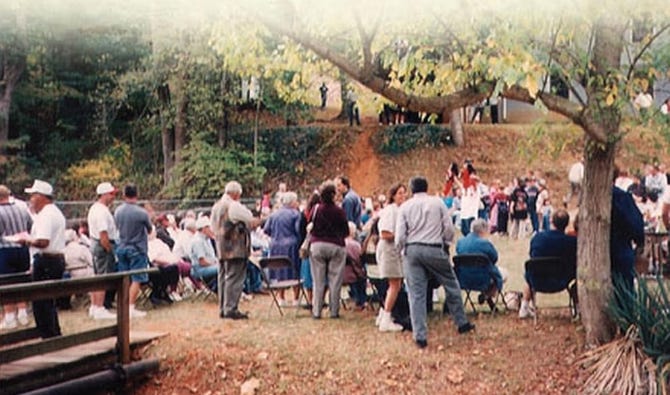
The Monacan tribal office is Madison Heights, and about 15 miles north on a windy road in a former schoolhouse which serves as a wonderful museum. The Monacan Indian Nation currently includes 2400 members, making it one of the largest native groups in Virginia. They’re recognized by the state and federal government. I highly recommend the museum. Very much worth your trip.
I’m sharing all this partly just because I found it interesting. I’m a history buff, so I’d heard of the Monacans, but I had no idea their settlements were around so long, or that they mined copper, or that they built burial mounds, or that one such town had existed so close to what is now Charlottesville, or that it’s been recently excavated by archaeologists (Including UVA professor Jeffery Hantman).
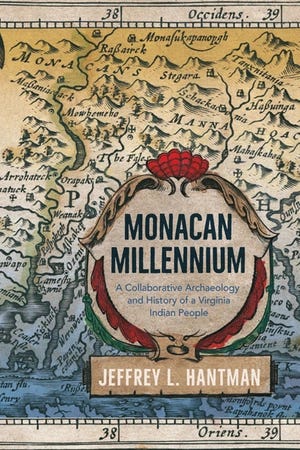
But I’m also starting the history thread of Welcome to Charlottesville with Monasukapanough because this part of the Monacan story introduces themes and patterns that will return later in the region’s history and eventually tie into the other three cords of our story.
Let me close by talking about “living close to nature” since it’s a cliche I’ve heard all my life so much that any mention of Native Americans brings it to mind. Native Americans lived close to nature. In important ways this is absolutely true. You can’t keep a town going for seven hundred years unless it is fairly ecologically practical and resilient. Think of all they faced through those centuries: droughts, floods, storms, diseases, wars, bad leaders. But make no mistake, most Europeans, most English, and in fact most people through history have lived pretty close to nature. In the Middle Ages the English maintained common pastures, coppiced woodlands, living hedges, and fertile fields for a thousand years. They were just as close to nature as the Monacans. Then in a few generations suddenly they enclosed their commons, started burning coal, and launched navies, armies and settlers across the globe. What brought the change? What made the English, or the Spanish, Mongols, Visigoths, or Huns suddenly go from minding their own business, living close to nature, and keeping their fighting mostly among themselves to taking everything that wasn’t nailed down and fighting and killing anyone who objected? That’s part of our story too.
A final point and then I’ll let you go. The Monacans survived. They are still here. And not because they respected their traditions, or fought to the death for their towns, or were willing to sacrifice themselves for the sacred remains of their ancestors. They survived because they abandoned their traditions, towns, and sacred burial sites, and retreated—not in panic but methodically—into the mountains. They left everything that we might think makes a people, yet somehow stayed a people.
Maybe Charlottesville will be here for seven hundred years. Or maybe the Monacans will prosper enough to repopulate their former towns. Or maybe other people, like us but not like us, will be contemplating these same mysteries millennia from now.
*These and most images of the indigenous people of Virginia in books or on the internet are based on watercolors of Algonquian villages done by a guy name John White who was governor of the ‘Lost Colony’ on Roanoke Island. I’m hoping to get a bonus post up about the images for Monacan towns.
Next Tuesday is the story of my family moving to Charlottesville the second time. I’ll start high school, make a few friends, and take up some new activities. On 8/6 we’ll return to the Police Stories project. On 8/13 we will pick up our history thread with the founding of Charlottesville itself, and tell its story up through the Civil War. Also I’m hoping to put out one to two bonus posts this week, so subscribe!
If you found this post informative or interesting, please share! Let’s spread the word about Monasukapanough.
Remember: It’s easier to pronounce than it looks: MONA-SUKA-PAN-OW.
If you have questions or honest feedback, I’d love to hear from you! Really! I’m so pleased that people are reading these posts! However…
Please absolutely NO profanity, personal insults, unhinged rants, sales pitches, or ad hominem attacks. I’m serious about this. I want my kid to be able to read comments. I will delete any comment that even hints of trolling.
I’ll check comments on this post up until Wednesday evening.


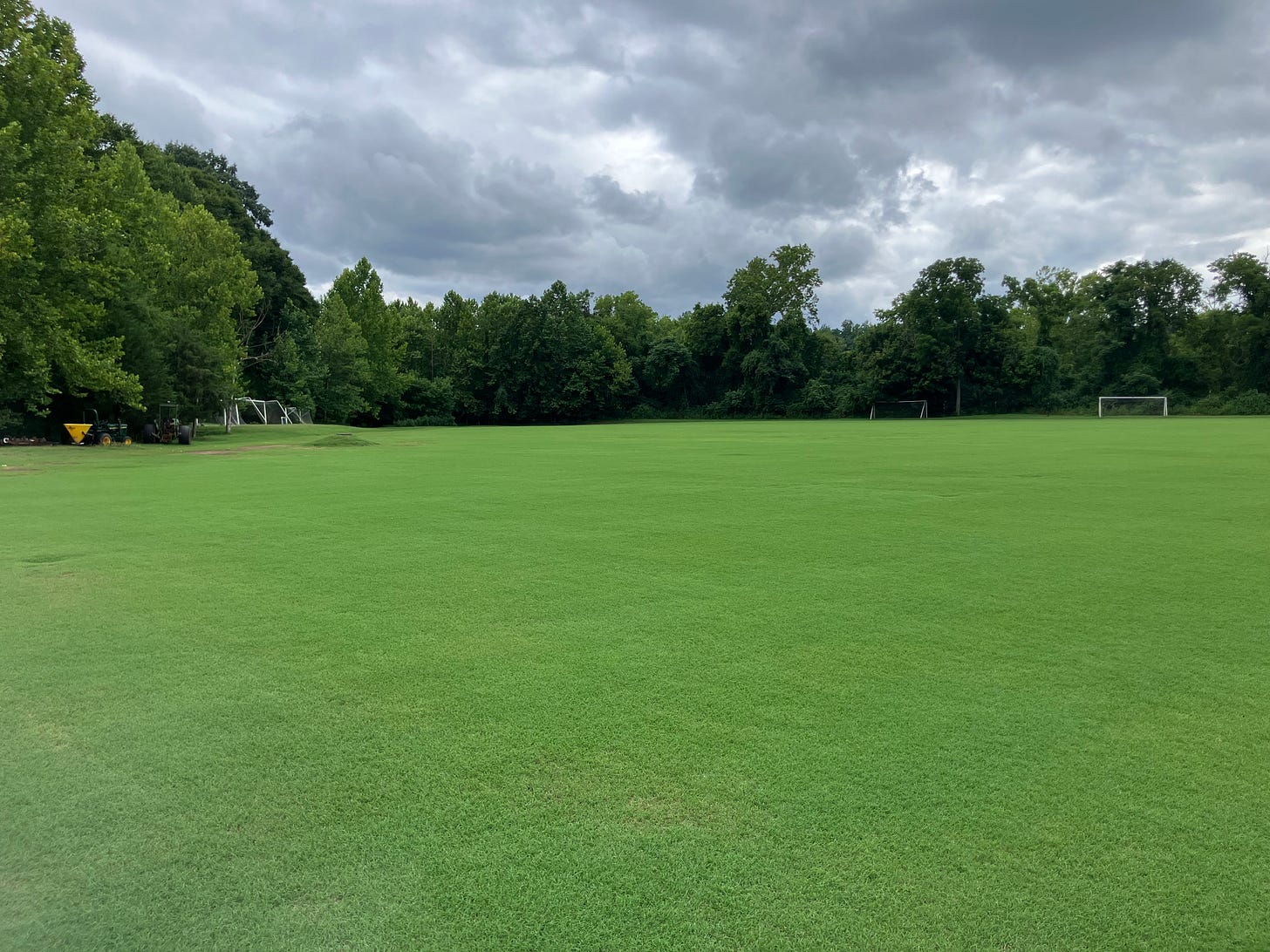
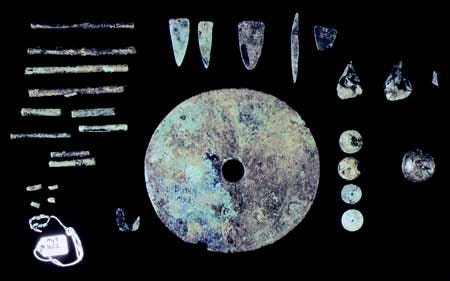
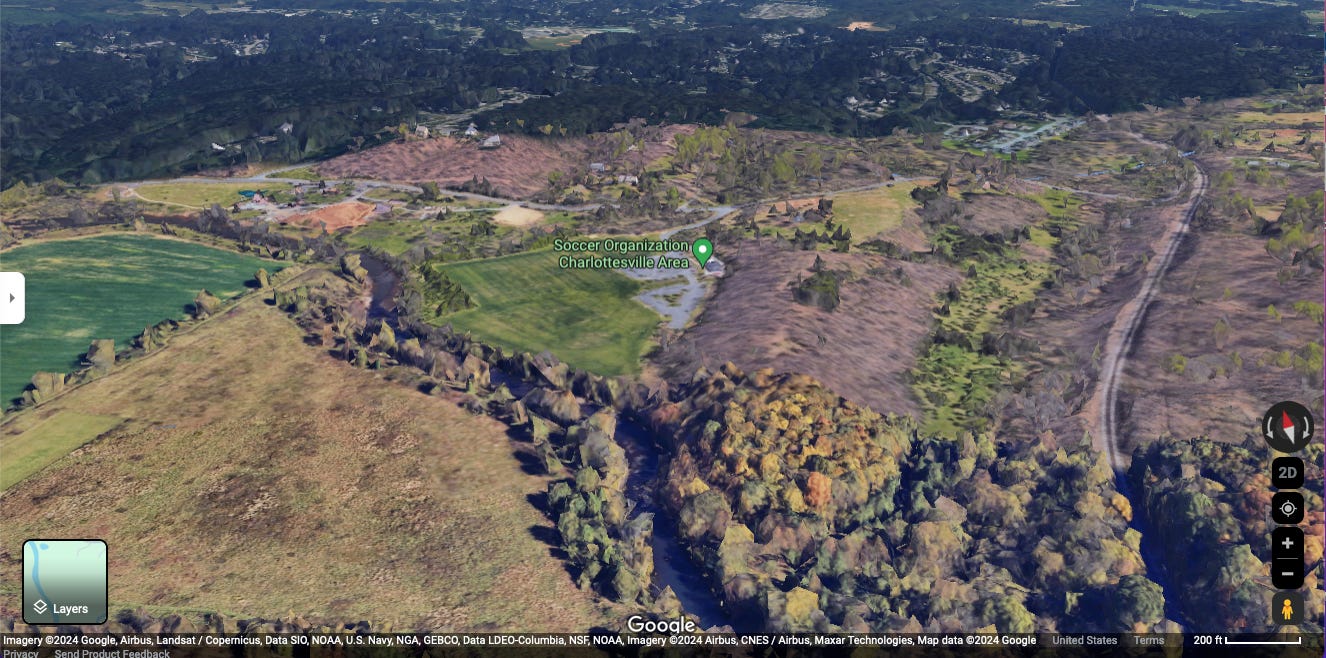
Excellent article. I use to do a Monacan presentation in the schools as representative of the Virginia museum of natural history… my focus was how they survived off of the land in their culture… wasting no part of a hunted deer or turkey, etc. I also have learned how to say mono su KA pa now. 🥰
Such great information. I had no idea there was an Indian village just up the road. Thank you for this wonderful article. I have enjoyed your other articles I have read and look forward to more. Thank you!